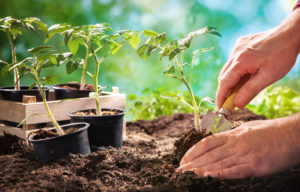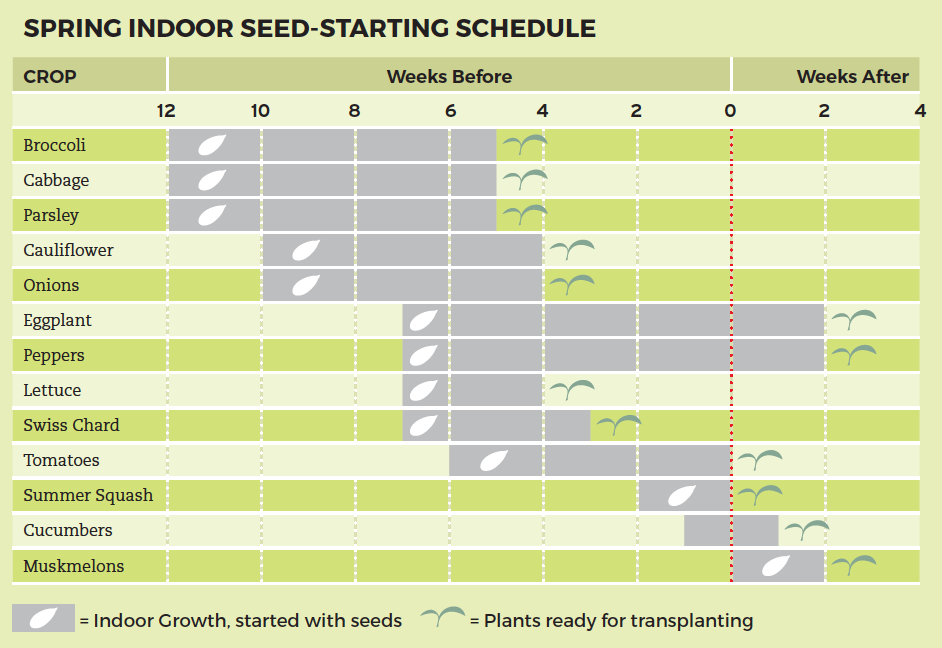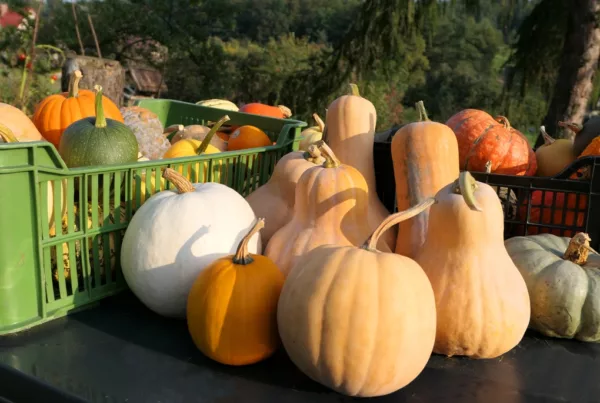If you live in a mild climate, you’ve likely already planted your warm season veggies by now. But let’s say you live in a colder climate or you’re (regardless of where you live) reading this blog post in March or April — how do you know when it’s time to yank out those cool-season veggies and replant your squares with warm season varieties?

Don’t sweat it; we’re going to walk you through it! It’s really quite simple, and once you’ve gone through a complete growing year, you’ll have the process down. There are a few important things you need to know before you start replanting, though, so keep reading.
Know your dates!
Your last frost dates, that is! This average date will be different depending upon where you live, and it’s crucial that you know when yours is — find out with this link from The Old Farmer’s Almanac. Simply pop in your zip code; it’s that easy. It’s impossible to overstate this because, as a gardener, you’re working with Mother Nature, and it’s vital to know when she’s warming up. She’ll give you lots of clues, and the last average frost date for your area is one of the biggest and most important.
Cool vs. Warm Season Veggies
If you’re new to gardening, you might be wondering what the actual difference is between cool season and warm season vegetables is. No worries! Cool season vegetables are the first ones planted in the gardening year, either a few weeks or a couple of months before your last frost date. The chart below will help you understand this better — the “0” on the top row indicates your last frost date, and the numbers on either side indicate the number of weeks before or after that date that you can plant the vegetables listed.

Cool season veggies not only thrive in those cooler months, most need the chillier temperatures — even light frosts — to grow well and produce their crop. These include broccoli, cauliflower, radishes, lettuces, arugula, carrots, Swiss chard, onions and the like. Now, it’s possible that cool season veggies will continue to grow when the weather turns warm, but their quality won’t be the best. And because we’re growing vegetables to eat them, that’s important.
Warm season veggies, on the other hand, require higher soil and air temperatures and are always planted after the last frost date. They include tomatoes, peppers, summer squashes, pumpkin, eggplant, cucumbers, melons, and beans. Once planted, many will grow and continue to produce until late summer or even early fall, depending upon the variety. But just like their cool season friends, warm season veggies might begin to lose some of their quality as the night air gets chillier.
How do I know when to remove my cool season veggies?
There are several ways to know when it’s time to pull those cool season veggies, and they’re all easy:
- Taste them: Are your greens bitter, your radishes tough?
- Look at them: Are the leaves yellowing and dying? Does the plant look like it’s just tired, and the harvest has slowed down?
- Watch out for “bolting”: That’s when a plant suddenly produces flowers and seeds, and it’s very common in spinach and other salad greens. While there are bolt-resistant varieties, the presence of flowering and seeds is a strong indicator that your cool season veggie has seen better days.
Any one of these things typically happen around the last frost date, or slightly afterwards — so keep an eye on that date and begin observing the signs that it’s time to perform last rites and replant with something more seasonally appropriate.
At what time of year do I plant my warm season veggies?
Again, this will be different depending upon where you live. Warmer climates (USDA Hardiness Zones 7-10) can plant warm season veggies as early as March, while cooler climates (Zones 6 and above) usually wait until April or May. The good news with Square Foot Gardening is that you don’t have to replant your entire garden at one time! Simply make a decision, square by square, if that particular cool season plant — your spinach, for example — is done, then remove it and replant with your tomato, pepper or other warm season vegetable. This process is really simple:
- Remove the spent plant — stems, roots, and any leftover debris like old leaves.
- Add one trowel of blended compost and thoroughly mix it in.
- Plant the seeds or transplants for the next crop.
And you’re done! That is, until the next square needs replanting — and to read more details, refer to All New Square Foot Gardening 3rd Edition.



